Winter is past and suddenly we notice birds as individuals. From being part of the crowd at the swarming birdtable, a pair of blue tits peers into our garden nestbox and immediately becomes our ‘own’. A blackbird brings a stick to our hedge, and overnight, alone among the company that customarily visits the diminishing berry supply on the holly or pyracantha, it becomes a regular and a neighbour.
Birds become more recognisable once the breeding season is upon them, and they begin to act in distinctive ways.
Of course, they have always been individuals: some coped with winter better than others because of their different attributes and abilities. It’s just that now, with so many tasks confronting them and with so many ‘decisions’ to take – how often to sing, whom to mate with, when to start nest-building, for instance – the birds express their differences more clearly in March than earlier in the year.
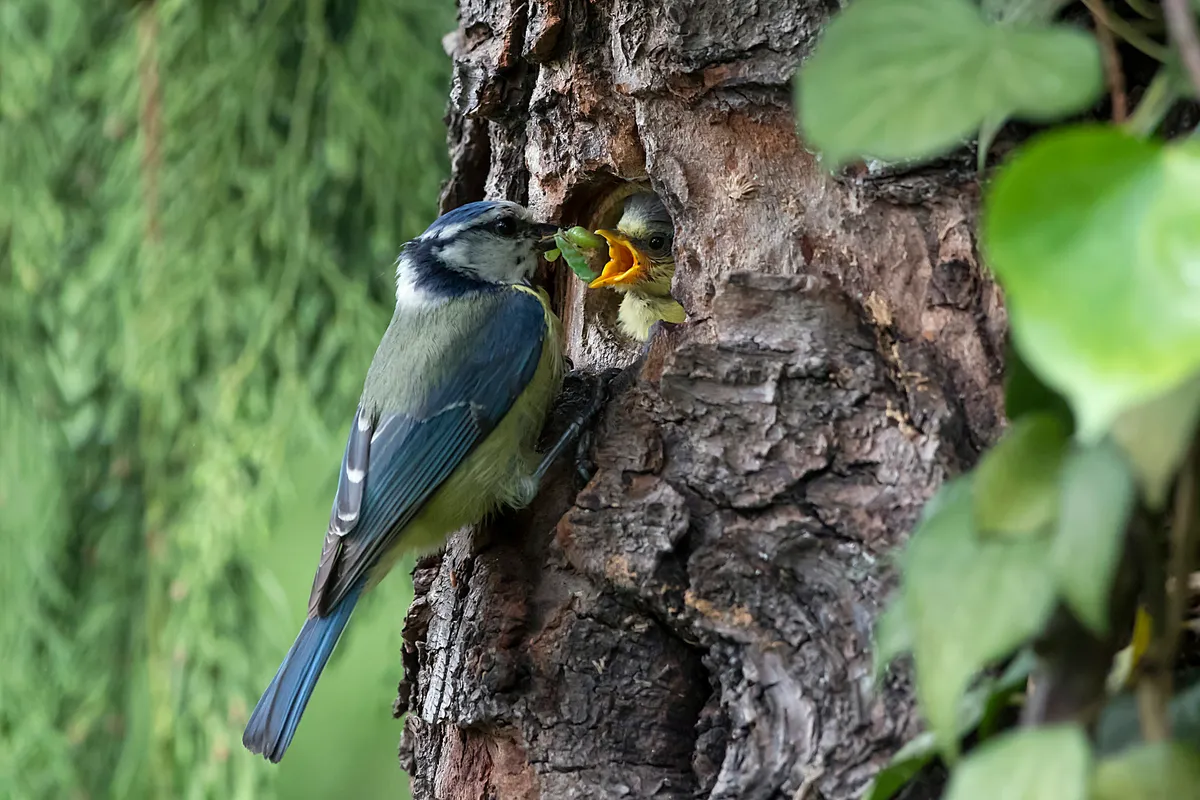
When does the bird breeding season begin?
One of the most telling variables is the precise time at which an individual or a pair starts to breed. If we set egg-laying as a measure, most robins or song thrushes, for example, first register in April.
But every year some daredevils audaciously lay in early March or even before, and their subsequent young spill out into an unfamiliar world decorated with daffodils, grape hyacinths and fresh but half-grown leaves. These parents are early birds, opportunists somewhat equivalent to humans who camp out rough before the January sales.
They are taking a big risk. Egg-laying is energetically demanding, requiring intense physical preparation over several weeks. A female needs to be in peak condition to pull off the feat and must eat a great deal of food to fuel it. Since March is often a time of acute shortages, there is a strong chance that she or her mate could overexert themselves and burn their bridges to survival.
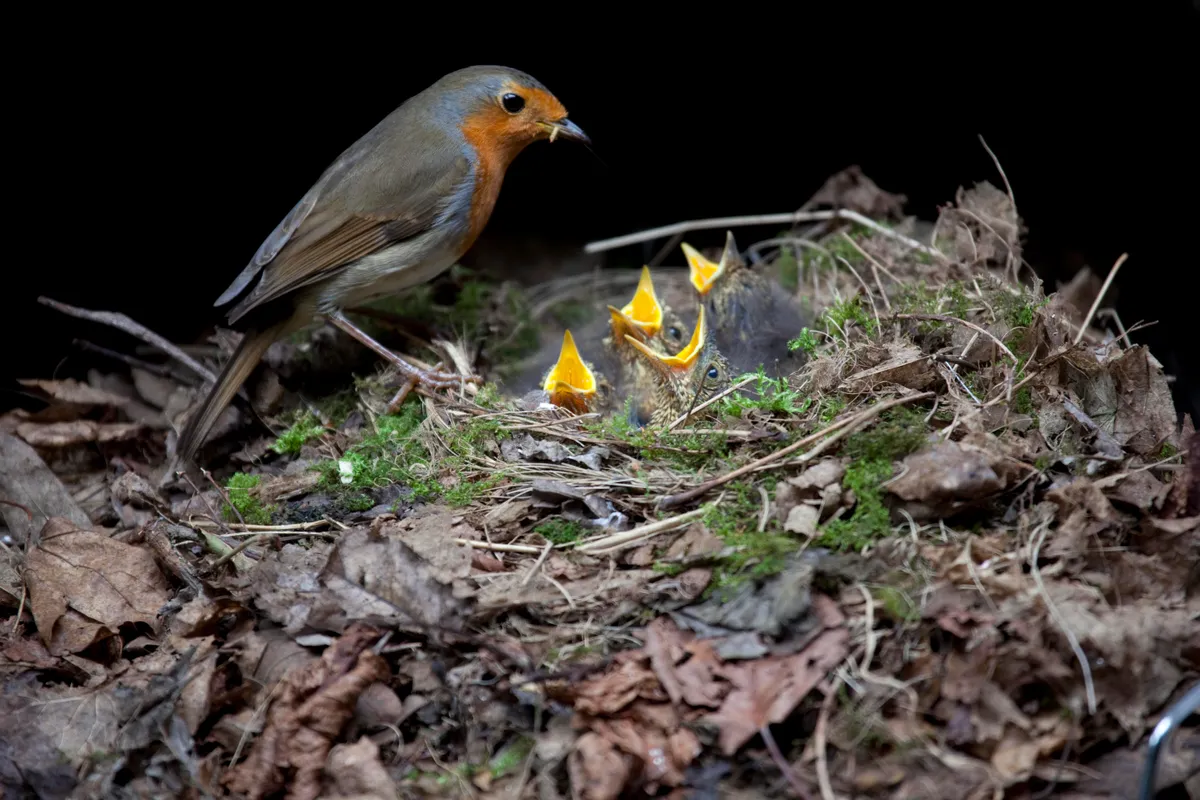
But every year some attempt it – birds that no insurance company would touch. But though the risks are clear, the potential gains are, too.
The earlier a pair starts to breed, the more young it can produce in a season. For birds that have several potential broods, a good start paves the way to maximising productivity, to ensuring that genes are copiously spread. In the Stock Market, no one gets rich without taking a gamble.
If you do have a pair of such birds feeding young in your garden, you can assume that they are at least a year old, and probably more. This early breeding game is only played by oldies, and the older the better, too, for birds of a certain age are not ‘past it’, more past masters. Their previous experience of life and of breeding gives them every advantage in the season to come.
Last year’s hatchlings have too much to learn. As well as breeding earlier, older birds generally have larger territories with more consistent boundaries and acquire a mate more quickly than their youthful counterparts.
When do birds lay eggs?
March doesn’t just fly the flag for individuality and seniority, though. It is also a time to show up differences between collectives of individuals – that is, species. And so, while it is common for a rook or carrion crow to have eggs in the nest by mid-March, it is almost unknown for a tit.
And while pigeons can produce young at almost any time of year, most birds have specific breeding seasons when it is deemed realistic for them to go ahead and produce. March magnifies the differences between these strategies.
You’ve probably registered this, and noticed signs of activity from some species and not others. For example, if your garden is in a rural area and there is a rookery nearby, you’ll see that, by now, almost all the rooks’ nests are occupied with sitting birds.
You might have detected that the tawny owls have fallen largely silent by night – that’s right, they are occupied by other things. And if you have heard a loud, dry rattle from high in a neighbourhood tree, it could signal that the mistle thrushes are getting nervous over their own clutch of newly-hatched eggs.
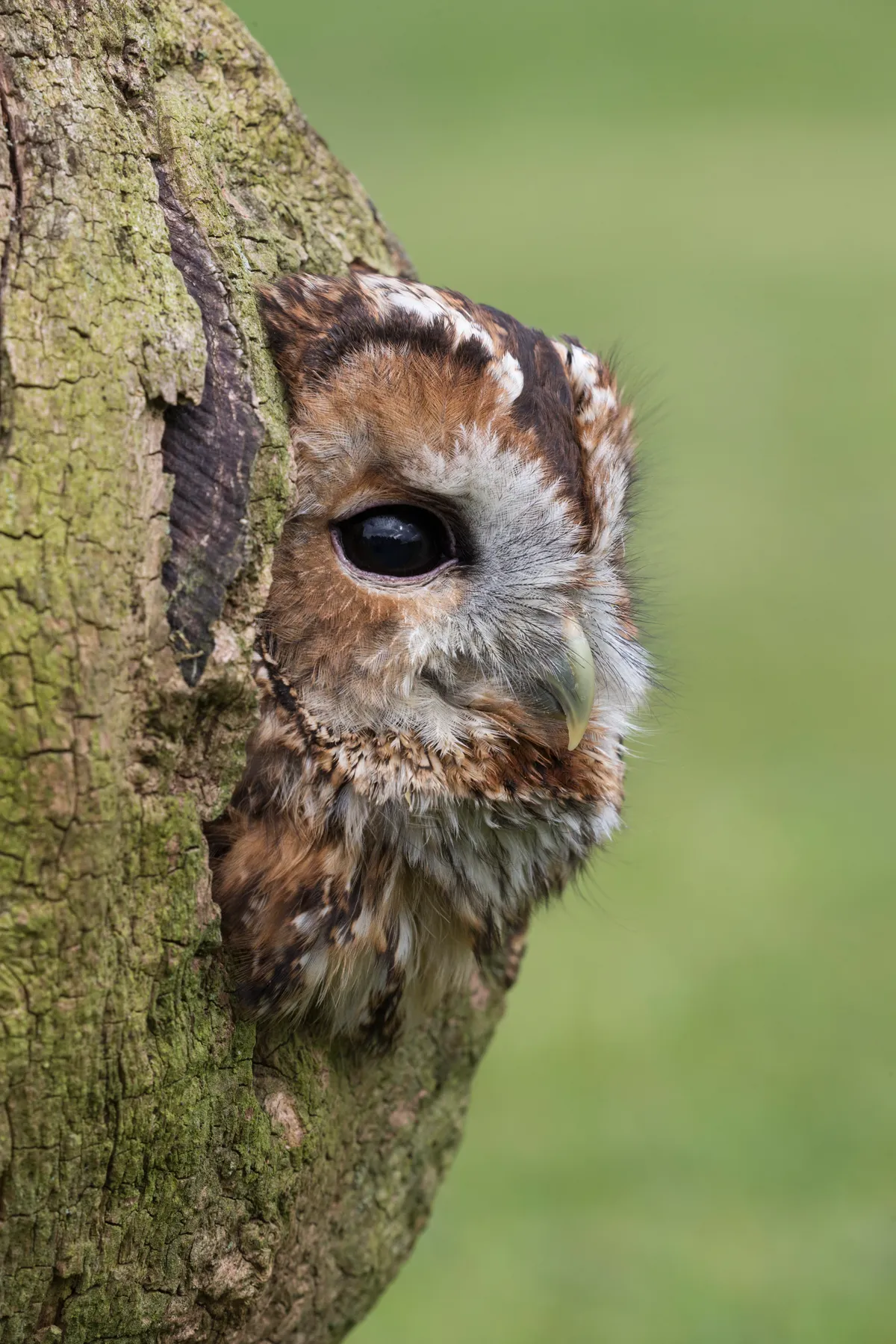
The early bird
All of these species have a reason for starting up early. The rooks are digging the damp soil for worms, easier to reach now than later in the year when the ground dries out. The mistle thrushes are doing the same, but it’s also said that their bulky stick structures are less vulnerable early on, when potential predators have not yet got into the habit of searching for nests and eggs.
For their part, tawny owls start early to ensure that, when they are feeding young, the spring’s growth of grass has not yet hidden and muffled the activities of the rodents on which their progeny depend. All these species are legislating for difficulties that would hinder them if they began later on.
The long-tailed tit is not yet laying eggs, but its breeding season is also always well underway by March. It has to be, because before any pair can even contemplate starting a family, they must build what is perhaps Britain’s most intricate and labour-intensive nest.
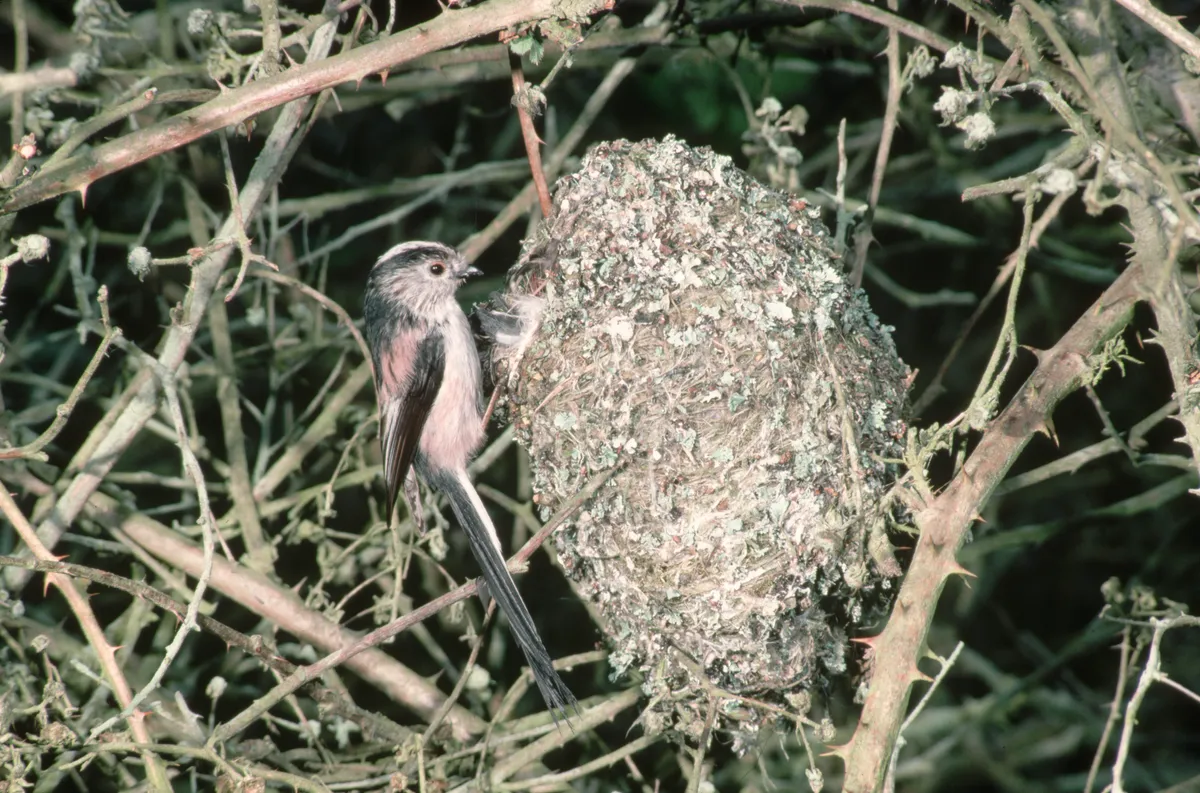
The nest is a soft dome constructed from thousands of pieces of moss stuck together by strands of cobweb. It is sprinkled with lichen fragments for protection and stuffed with feathers for insulation. The nest takes about three weeks to build and, when finished, will house an average of eight young.
If you have the chance, don’t miss the opportunity this month to watch a pair building nearby – early sunny mornings are best.
A busy time for wrens
Long-tailed tits are not the only diminutive garden birds involved in hard March labour: it’s the building season for the wren, too. Or, at least, for the male.
He spends the early spring constructing unlined, unfurnished nests within his territory. Once finished, he sings loudly and shows them off to visiting females, who will assess his aptitude as a mate partly by his handiwork. If he’s built well, he stands a good chance of being chosen, and so he puts in heavy effort now, making between three and ten nests, assembling a portfolio.
Of course, there are some birds for which March is not a ‘breeding’ month at all: they will not be building nests or laying eggs yet. These are the ones that visit us only for the summer, the migrants such as swallows and spotted flycatchers.
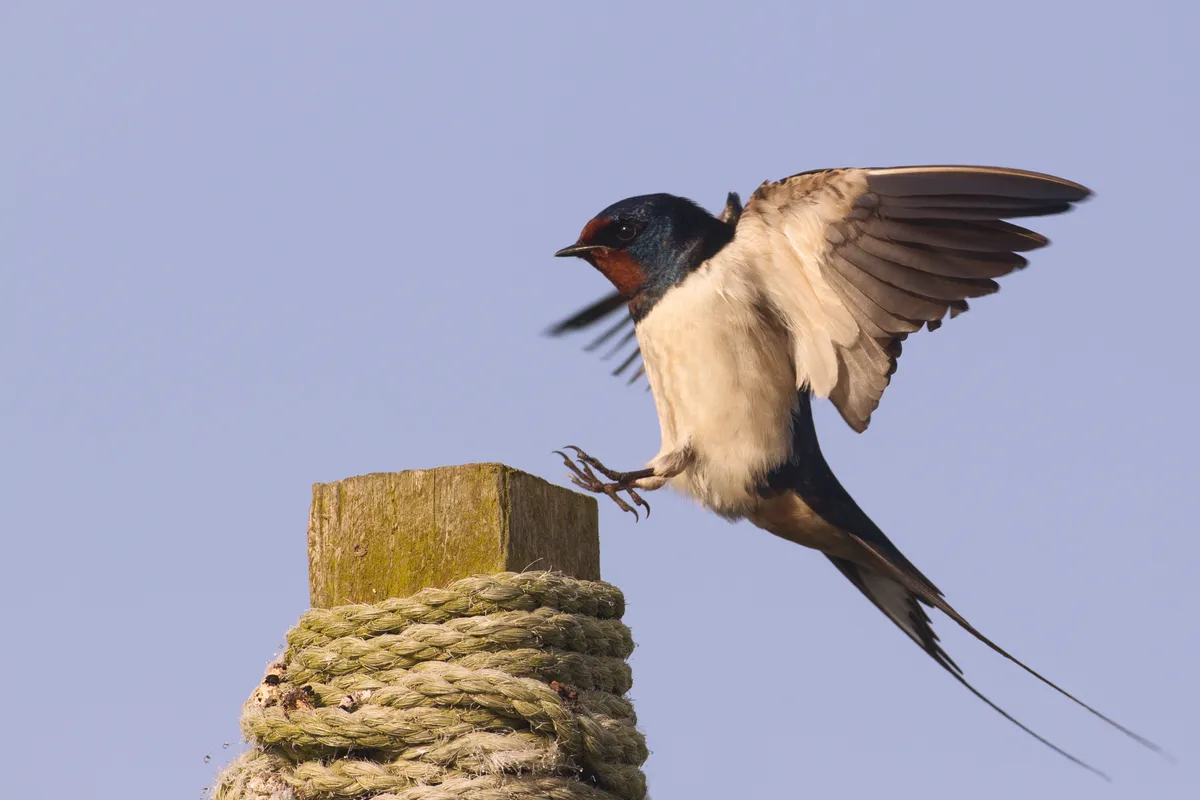
They are still on their travels, perhaps a hundred, perhaps a thousand, kilometres to the south of us. They are destined to be forever behind the resident birds in their hectic breeding schedules.
But spring migration is still a race, with some heading the field, some lagging behind. Some species arrive early – swallows and chiffchaffs, for example – and some later, such as swifts and house martins. But, more tellingly, some individuals of a species may also arrive way before the others, rushing north to grab the advantages of early arrival.
And we might catch sight of them: a swallow dashing over the rooftops on a chilly March day, or a chiffchaff feeding busily among pussy willow or apple blossom. They have beaten their rivals to a territory, and will be hard to dislodge. These are the early birds par excellence, perhaps proclaiming their individuality in the most impressive way of all.
